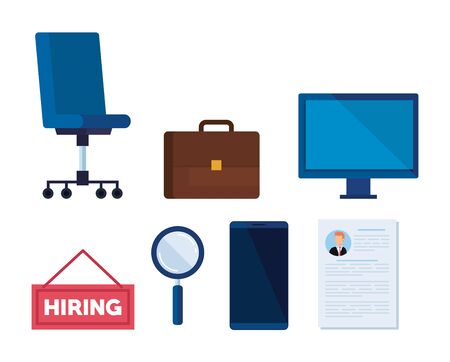1. Understanding the Importance of Healthy Work Boundaries
Why Boundaries Matter in a 24/7 Connected World
In today’s digital age, work is always just a tap away. Smartphones, laptops, and workplace apps mean that emails, messages, and deadlines can follow us everywhere—sometimes even into our evenings and weekends. While being reachable has its perks, it also makes it tough to truly “clock out.” Setting healthy boundaries at work isn’t just about saying “no” to extra tasks; it’s about protecting your mental health, boosting productivity, and improving your overall quality of life.
The Impact of Constant Connectivity
When you’re always connected to work, you might feel like you can never fully relax. This constant pressure can lead to stress, burnout, and even physical health problems. Let’s take a look at how healthy work boundaries make a difference:
| Area | Without Boundaries | With Healthy Boundaries |
|---|---|---|
| Mental Health | Stress, anxiety, trouble sleeping | Peace of mind, lower stress levels |
| Productivity | Easily distracted, less efficient | Better focus, higher quality work |
| Well-being | No time for hobbies or family | More time for life outside work |
The American Perspective on Work-Life Balance
In the U.S., there’s a growing awareness that working nonstop isn’t sustainable. Many Americans are learning that setting clear expectations with their bosses and coworkers helps create healthier workplaces for everyone. Simple steps—like turning off email notifications after hours or taking real lunch breaks—can go a long way.
What Does Setting Boundaries Look Like?
- Saying when you’re available—and when you’re not
- Pushing back on unreasonable requests outside normal hours
- Taking time off without guilt or interruption
- Respecting others’ boundaries too
Learning to set these limits takes practice, but it’s key to thriving—not just surviving—in our always-on world.
Identifying Personal Limits in a Digital Workspace
In today’s 24/7 connected work culture, it can be tough to know when to log off. Understanding your own limits is the first step toward setting healthy boundaries. By learning how to recognize your capacity, spot signs of burnout, and assess where to draw the line with work-related communications, you can take charge of your well-being.
Recognize Your Capacity
Everyone has a different threshold for how much work they can handle before feeling overwhelmed. Start by taking note of how you feel during and after your workday. Are you energized or exhausted? When do you start losing focus? Keeping a simple log for a week can help highlight your personal patterns.
| Time of Day | Energy Level | Focus Level |
|---|---|---|
| Morning | High | Sharp |
| Afternoon | Medium | Waning |
| Evening | Low | Distracted |
This kind of self-awareness makes it easier to set reasonable boundaries around meetings, emails, and project deadlines.
Spot Signs of Burnout Early
Burnout doesn’t happen overnight—it creeps up over time. Watch out for these red flags:
- Trouble sleeping or constant fatigue
- Irritability or mood swings
- Lack of motivation or satisfaction from work
- Physical symptoms like headaches or stomach issues
- Dreading work-related messages at all hours
If you notice any of these signs, it’s time to reassess your workload and digital habits.
Assess Where and When to Draw the Line
The key is figuring out which types of communications really need your immediate attention—and which don’t. You might decide that after 6 PM, only urgent texts get a response, while emails can wait until morning. Here’s an example boundary-setting chart:
| Type of Communication | Response Time (During Work Hours) | Response Time (After Hours) |
|---|---|---|
| Within 2 hours | Next business day | |
| Instant Message (Slack, Teams) | Within 30 minutes | No response after 6 PM unless urgent |
| Phone Call (Work Related) | As soon as possible | Only if marked urgent; otherwise next day |
The point is to give yourself permission to unplug. Share your boundaries with colleagues so everyone is on the same page.
Your Boundaries Matter—And So Does Your Health!
You don’t have to be “always on” to be a valuable employee. Identifying your limits is a sign of professionalism and self-respect. In the next section, we’ll explore practical strategies for communicating your boundaries effectively with your team.

3. Communicating Boundaries with Managers and Teams
Why Communication Matters
In today’s always-connected workplace, clearly communicating your boundaries is key to staying productive and avoiding burnout. Setting healthy boundaries is important, but making sure your managers and teammates understand them is what truly makes them work.
Tips for Assertive and Professional Boundary Setting
| Tip | How to Apply It |
|---|---|
| Be Direct but Respectful | Use clear language like “I am unavailable after 6 PM, but I will respond to messages first thing in the morning.” Avoid apologizing for having boundaries. |
| Explain Your Reasons | If comfortable, share why a boundary exists. For example, “I need uninterrupted time after hours to recharge so I can be more focused during the day.” |
| Propose Alternatives | If you can’t attend a late meeting, suggest another time or offer to send notes instead. This shows you’re still committed to the team’s goals. |
| Use Company Tools | Set your status on Slack, Teams, or email (like “Out of Office” or “Do Not Disturb”) during non-working hours so others know when you’re off. |
| Revisit Boundaries as Needed | If project demands change, communicate any adjustments early with your team to stay aligned and avoid misunderstandings. |
Sample Phrases for Boundary Conversations
- With Managers: “To maintain my best work quality, I’ve found I need to unplug by 7 PM. If something urgent comes up after that, could we set up an emergency protocol?”
- With Coworkers: “I’m happy to help with this project during my work hours. Let’s coordinate our schedules so we can both be most effective.”
- Group Settings: “Can we agree as a team on core working hours? That way we all know when it’s okay to disconnect and focus.”
Maintaining Collaboration While Holding Boundaries
The goal isn’t just to say no—it’s about finding ways to balance your personal needs with team goals. Approach conversations with empathy and a willingness to compromise when possible. Healthy boundaries help everyone perform better in the long run.
4. Leveraging Technology to Promote Work-Life Balance
How Tech Tools Can Help You Draw the Line
In today’s always-on world, technology is often blamed for blurring the boundaries between work and personal life. But when used wisely, tech can actually become your ally in protecting your downtime. Let’s explore some practical tools and features that make it easier to set—and stick to—your healthy work boundaries.
Top Tech Features to Support Your Boundaries
| Tool/Feature | How It Helps | Where to Find It |
|---|---|---|
| Do Not Disturb | Mutes notifications so you can focus or rest without interruptions from calls, texts, or app alerts. | Available on most smartphones, tablets, and laptops. |
| Email Scheduling | Lets you write emails anytime but send them only during work hours, helping you respect your own and others’ time. | Gmail, Outlook, and other major email platforms. |
| Notification Settings | Allows you to customize which apps or contacts can reach you after hours. | Settings menu on your devices and within individual apps. |
| Status Messages (e.g., Slack Away) | Tells coworkers when you’re off the clock so they know not to expect an immediate response. | Work chat apps like Slack, Teams, etc. |
| Calendar Blocking | Blocks out time for breaks or personal commitments so meetings aren’t scheduled over them. | Google Calendar, Outlook Calendar, etc. |
Quick Tips for Using These Tools Effectively:
- Set regular Do Not Disturb hours: Choose times each day when you won’t receive work notifications—like during dinner or after 7pm.
- Schedule emails for working hours: Even if you’re catching up late at night, use email scheduling so messages go out in the morning.
- Edit notification settings: Turn off non-essential alerts or set “priority only” contacts for emergencies.
- Add calendar events for breaks: Treat your personal time as non-negotiable by blocking it off just like a meeting.
- Communicate your status clearly: Use away messages or status updates so coworkers know when you’re unavailable—and stick to it yourself!
The Bottom Line: Technology Can Work For You
If you’re feeling overwhelmed by constant connectivity, remember: You have more control than you think. By making small changes with tech tools already at your fingertips, you can reclaim your personal time and create a healthier balance between work and life—without missing out on what matters most.
5. Building Sustainable Habits for Long-Term Success
Why Sustainable Habits Matter
In today’s always-on work culture, healthy boundaries can quickly fade if you don’t create routines that reinforce them. Building sustainable habits helps you regularly disconnect, recharge, and show others that your time outside of work matters.
Strategies for Disconnecting After Hours
| Strategy | How to Practice |
|---|---|
| Set Device-Free Hours | Pick a daily time—like after 7pm—when you silence work notifications and put away your laptop or phone. |
| Create a Shutdown Ritual | End each workday by making tomorrow’s to-do list and physically closing your laptop to signal the end of work. |
| Communicate Availability | Let your team know your “offline” hours so they respect your personal time. |
Prioritizing Self-Care Consistently
You can’t pour from an empty cup. Make self-care part of your regular schedule—not just when you feel burned out. Consider these easy-to-implement habits:
- Block off “me time” on your calendar: Treat it like any important meeting.
- Take real breaks during the day: Step outside, stretch, or meditate for five minutes.
- Pursue hobbies after work: Make room for activities that spark joy and creativity.
Nurturing a Culture of Respect Toward Boundaries
Sustainable change happens when everyone supports healthy boundaries, not just individuals. Here are some ways to encourage this culture at work:
- Lead by example: Managers should model unplugging after hours and avoid sending late-night emails.
- Acknowledge boundaries publicly: Give shoutouts to team members who set clear boundaries and stick to them.
- Create team agreements: Work together to decide on shared norms for response times and time off.
Your Action Plan: Small Changes Add Up
Sustainable habits aren’t built overnight. Start with one or two new practices and build from there. Over time, these habits help protect your well-being, boost productivity, and inspire those around you to do the same.


